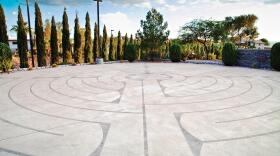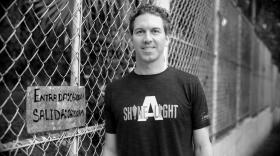Rayette Martin, Executive director, Nevadans for Cultural Preservation
This story starts in Wasilla. Imagine Rayette Martin doing what a young, outdoorsy, third-generation Alaskan does for weekend kicks: taking her four-wheel-drive Subaru wagon into the outlands, exploring old mining sites, picking over rusty equipment for something cool to take home: Check it out, here’s an old iron ball used to crush raw rock. Nobody’s gonna miss it, right? It wasn’t like she was looting an ancient Mayan temple like Indiana Jones or something. It was all part of the ethos of using the land — a practice in line with her family’s other pastimes of hunting, fishing and camping.
“It was through school that I learned to behave differently,” says Martin, who got her master’s degree in cultural anthropology at UNLV in 2010. “It was also through finding those things myself and going, ‘Wow,’ and leaving them there so the next person could have the same experience.”
Leave it there. That’s the core principle of Nevadans for Cultural Preservation ( nvfcp.org), a nonprofit Martin launched in August 2013. She and her crew talk to off-road groups, hiking clubs and schoolkids about responsible enjoyment of public lands. They also do workshops, site clean-ups and guided field trips. But put out of your mind the image of outdoorsier-than-thou puritans wagging their fingers at hikers and off-roaders with a quiver of thou-shalt-nots. To be sure, Martin’s aim is to preserve the petroglyphs, arrowheads, agave pits, historic ranch ruins and mining castoffs that tell the story of Nevada. But the spirit of her approach is about affirmation, not denial. It’s about respecting and sharing the narrative power of place.
Pop quiz: You come across an arrowhead during a hike. What’s the big deal if you take it home — after all, if you don’t, someone else will, right? “When you take it out of context, it doesn’t have value anymore,” Martin explains. “If we leave things where we find them, it’s actually the context that tells the story. If I have an arrowhead in my house, it’s just an arrowhead. But if I leave it where it’s found, it’s an arrowhead that’s connected to the area, that creates a story. And it’s the story that has the value, not the object.”
Her affirmative approach defuses much of the tension between conservation activists and outdoors enthusiasts. Martin herself has a foot in each world: She’s an avid off-roader and hiker; by day, she’s a program assistant for the Nevada Site Stewardship Program. “I encourage people to go out, use our public lands, and find these things — and enjoy them while they’re there, and leave them for someone else to enjoy.” But not because these lands are fragile museum exhibits; rather, because we’re part of the story, too. Martin is reminded of a recent desert hike where she sought precious shade in a rock shelter. Inside were stone tools from a previous visitor. “I laid down and looked up at the sky, and thought about what it would have been like back then: I wouldn’t have had my moisture-wicking shirt, and my hiking shoes and my six liters of water on my back. But still, I found the same place to take a break as somebody deep in the past did. We’re no different.”







